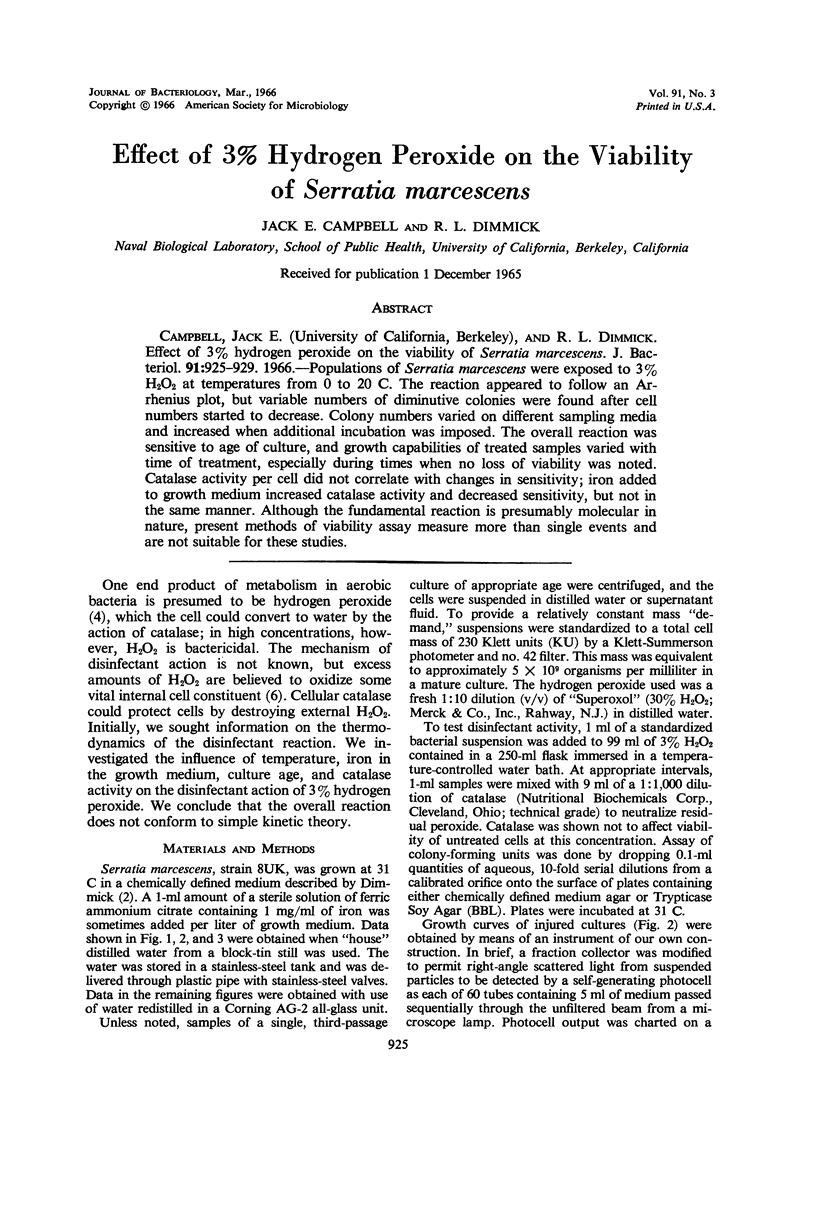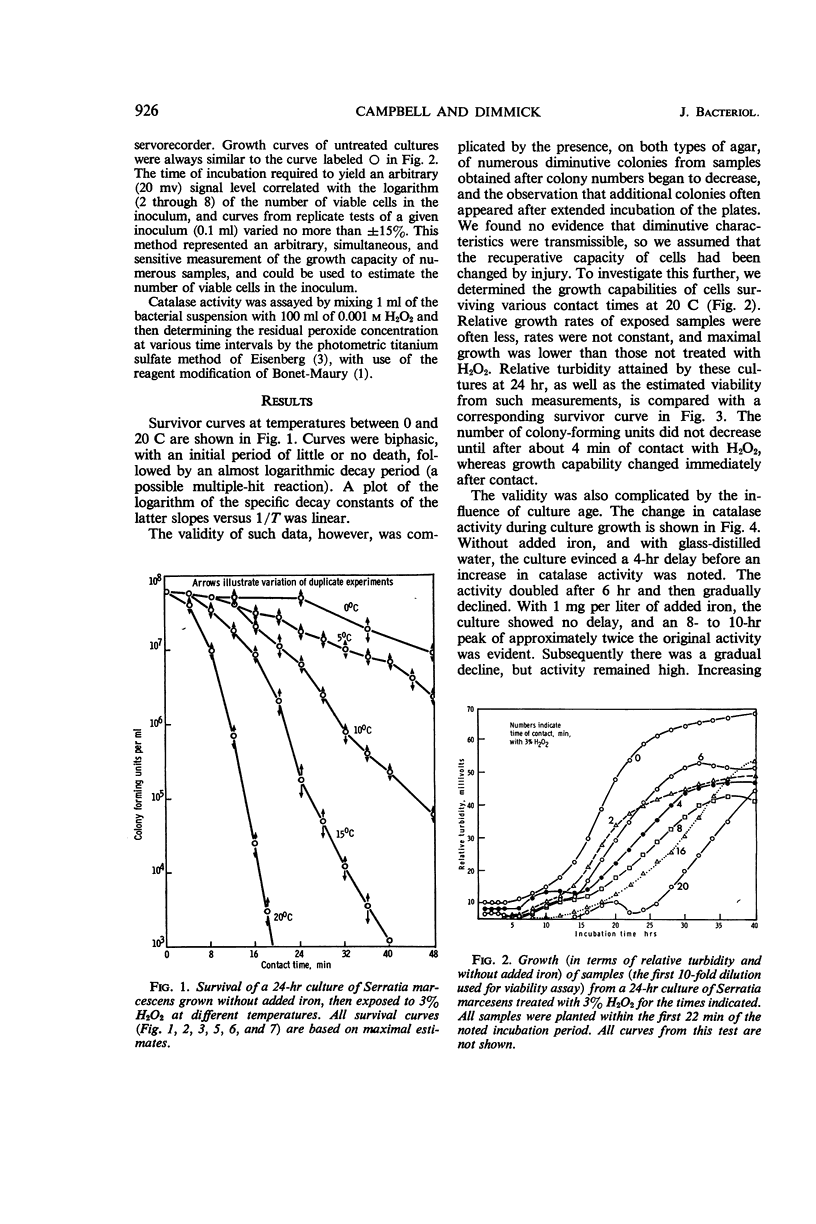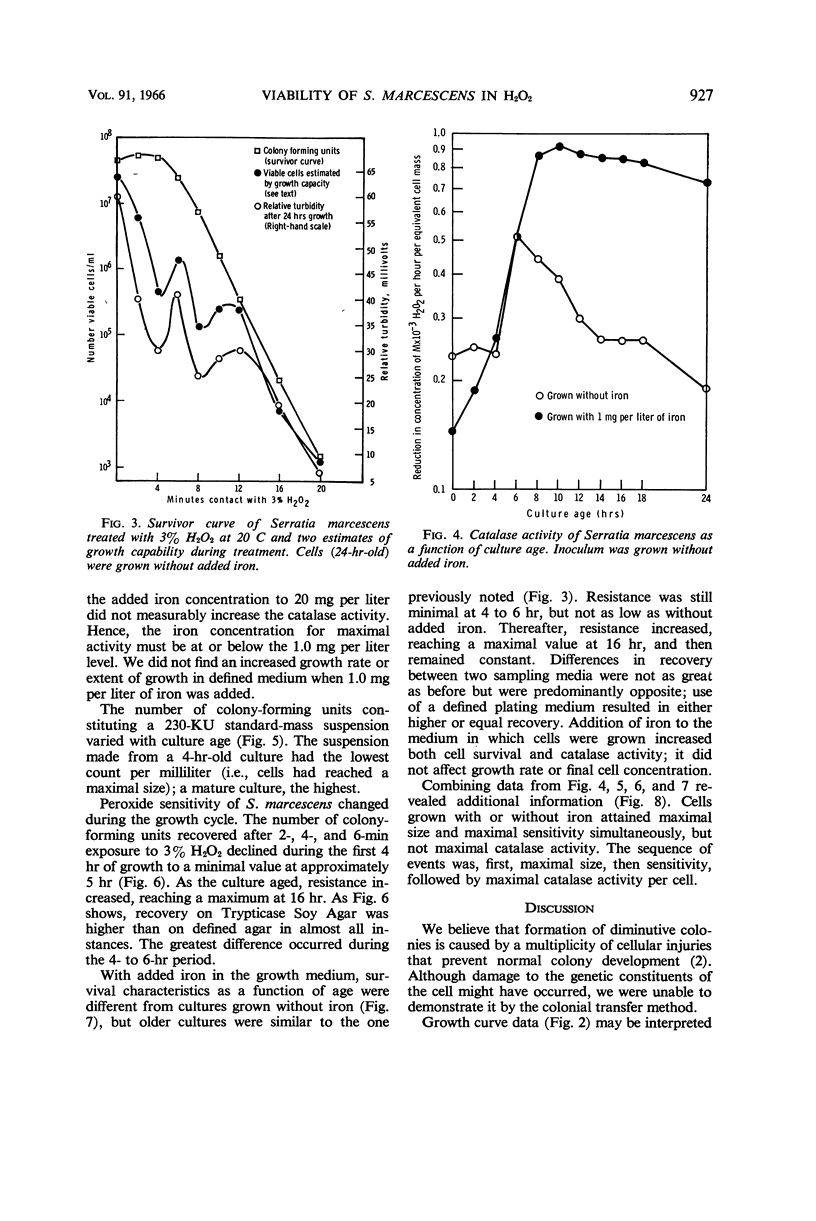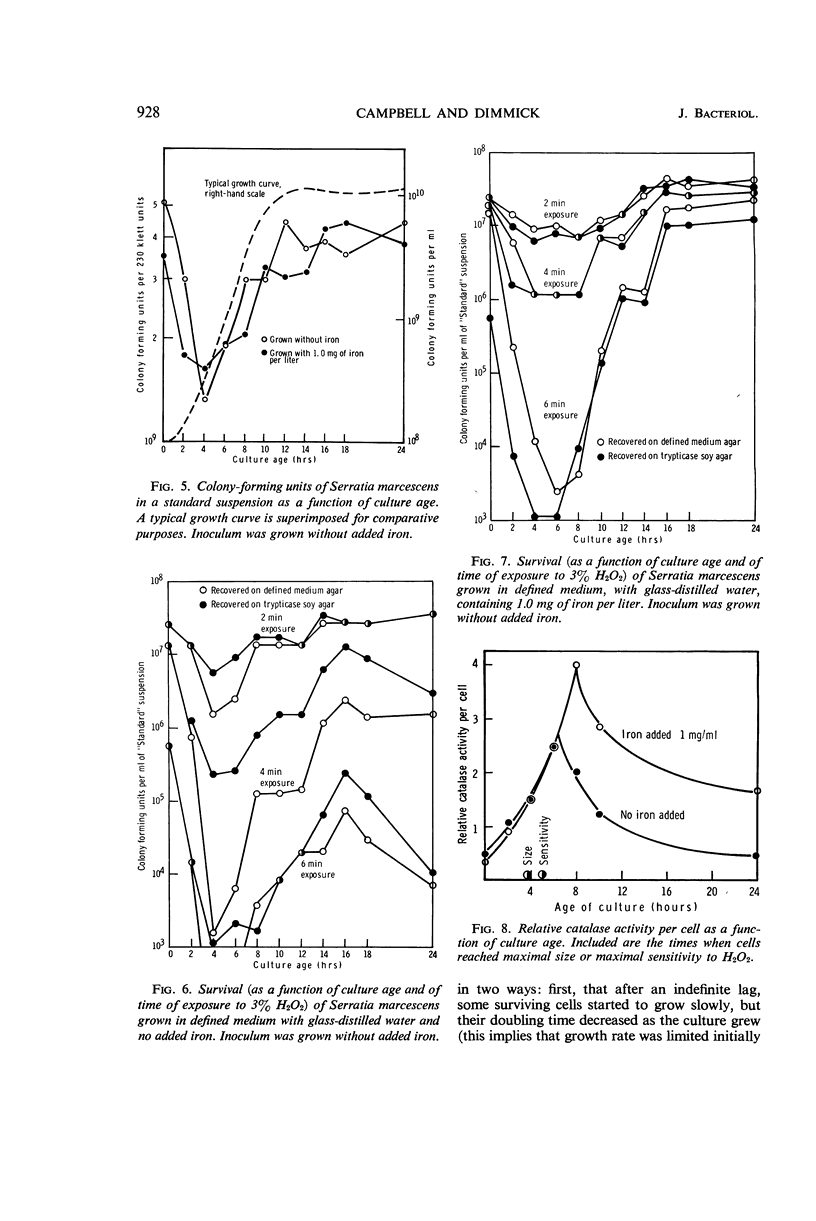Abstract
Campbell, Jack E. (University of California, Berkeley), and R. L. Dimmick. Effect of 3% hydrogen peroxide on the viability of Serratia marcescens. J. Bacteriol. 91:925–929. 1966.—Populations of Serratia marcescens were exposed to 3% H2O2 at temperatures from 0 to 20 C. The reaction appeared to follow an Arrhenius plot, but variable numbers of diminutive colonies were found after cell numbers started to decrease. Colony numbers varied on different sampling media and increased when additional incubation was imposed. The overall reaction was sensitive to age of culture, and growth capabilities of treated samples varied with time of treatment, especially during times when no loss of viability was noted. Catalase activity per cell did not correlate with changes in sensitivity; iron added to growth medium increased catalase activity and decreased sensitivity, but not in the same manner. Although the fundamental reaction is presumably molecular in nature, present methods of viability assay measure more than single events and are not suitable for these studies.
Full text
PDF




Selected References
These references are in PubMed. This may not be the complete list of references from this article.
- DIMMICK R. L. RHYTHMIC RESPONSE OF SERRATIA MARCESCENS TO ELEVATED TEMPERATURE. J Bacteriol. 1965 Mar;89:791–798. doi: 10.1128/jb.89.3.791-798.1965. [DOI] [PMC free article] [PubMed] [Google Scholar]
- Krasna A. I. Nonparticipation of hydrogen peroxide in the cytochrome oxidase reaction. Arch Biochem Biophys. 1965 Oct;112(1):209–211. doi: 10.1016/0003-9861(65)90033-0. [DOI] [PubMed] [Google Scholar]
- McCARTHY B. J., HINSHELWOOD C. Variations in catalase activity during a bacterial growth cycle. Proc R Soc Lond B Biol Sci. 1959 Jan 27;150(938):13–23. doi: 10.1098/rspb.1959.0004. [DOI] [PubMed] [Google Scholar]


